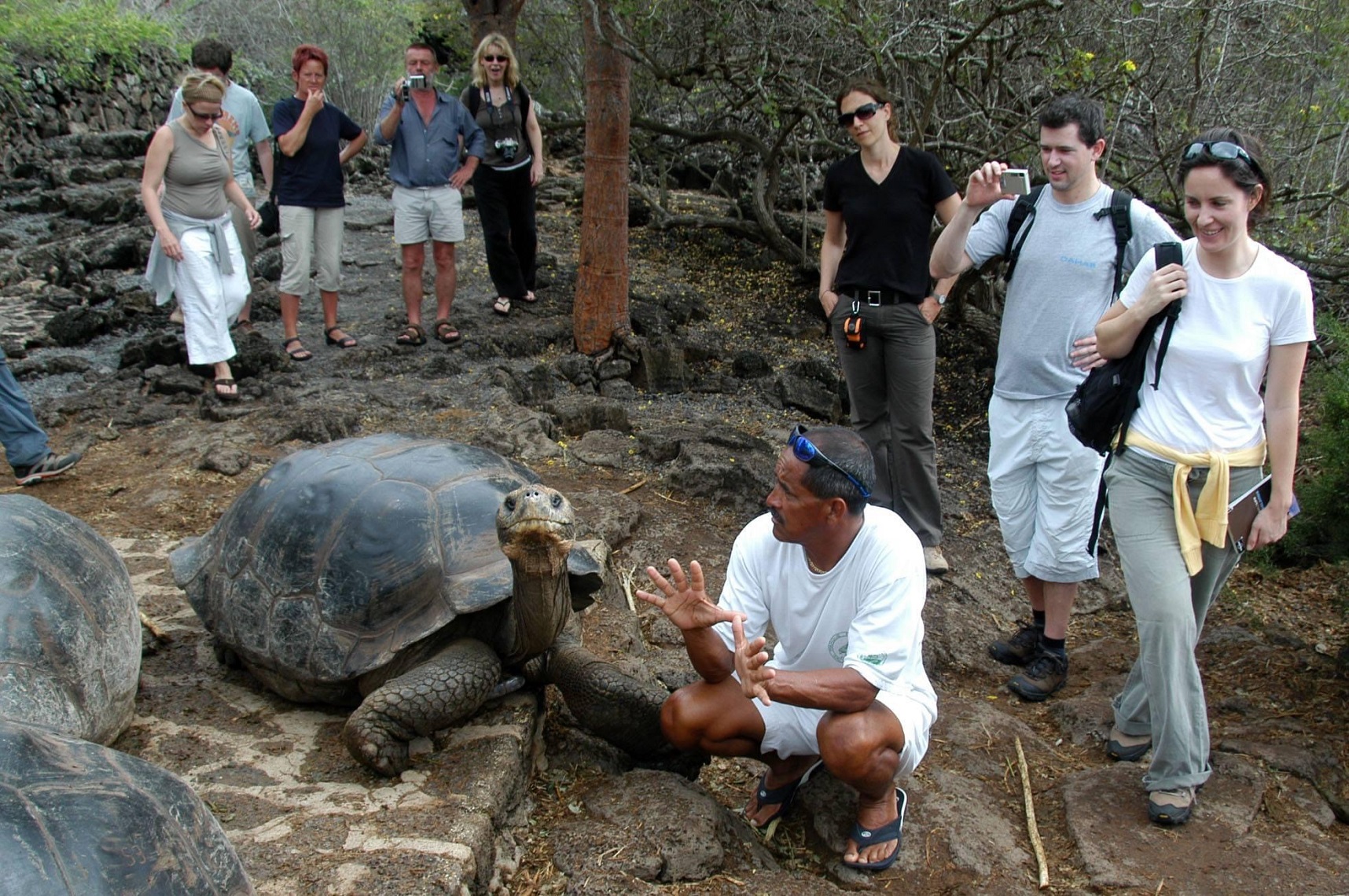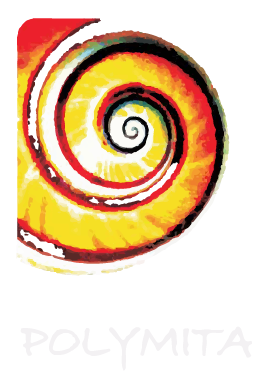

ARTICLE
THE ENCHANTED ISLANDS
BY: JULIO A. LARRAMENDI
On the 485th anniversary of the discovery of the Galapagos Islands
Fray Tomás de Berlanga, bishop of Panama, makes himself comfortable in his cabin, ready to leave for Lima. It is March 1535 and the Emperor Carlos V has commissioned him to arbitrate territorial disputes between the conquerors Francisco Pizarro and Diego de Almagro.
A gentle breeze inflates the sails of the ship that glides fast over the waters of the Pacific Sea. After a sumptuous dinner, sprinkled with a good Rioja, the bishop takes off his habit and goes to sleep, away from the worldly noises and mosquitoes that torment him every night at his headquarters, surrounded by jungles and swamps. It will be a smooth and quick ride.
Hours later he is awakened by the shouts of the boatswain, who transmits the captain's orders, and the frenzied hustle and bustle of the sailors lowering the sails and securing everything that can roll on the deck: a storm is upon them. Three terrible days have passed during which the small ship, built in Havana, withstood the onslaught of the wind and waves, which carried it hundreds of miles from the coast, far from her original course. The navigation charts indicate that they are in the middle of nowhere. They have lost almost all barrels of drinking water and food rations have been contaminated by the sea.
A group of birds flies over them, in the opposite direction to where the coast is according to the map and the compass. But since they are a sure sign of nearby land, the captain decides to follow them. In a few hours they see the soft green hills of some small unknown islands.
They are surprised by the enormous number of species of flora and fauna never seen before; in particular the huge turtles. A few years later, in the first maps that include the islands, made by cartographers Abraham Ortelius and Gerardus Mercator, they are described as "Insulae de los Galopegos" (Islands of the Turtles). From then on, the Galapagos were used by English pirates to hide the spoils obtained by attacking Spanish galleons that carried gold and silver from the New World to Spain.
The first scientific mission to arrive in those places was that of Alessandro Malaspina, in 1790. The most important and well-known, that of the British ship HMS Beagle, under the command of Captain Robert FitzRoy, who arrived on September 15, 1835, as part of a tour that would take her to Valparaíso, Callao, Galapagos, Tahiti, New Zealand, Australia and the Cape of Good Hope. The young naturalist Charles Darwin and a good part of the crew carried out geological and biological studies of four of the islands during five weeks, although Darwin was ashore only two, investigating plants and animals. These studies allowed him to formulate and base his theory on the origin of species, the basis of Evolutionary Biology.
Formed by 13 large islands, 9 small and 107 rocks and islets, with a total area of 8,010 km2 and a current population of just over 33,000 inhabitants, the Galapagos archipelago, surrounded by the Pacific Sea, is one of the provinces of Ecuador , a country to which it was annexed in 1832.
It is the second archipelago with the highest volcanic activity, surpassed only by Hawaii. Its most active volcanoes are Cerro Azul, Sierra Negra, Marchena and La Cumbre; the latter, on Fernandina Island, one of the busiest in the world.
Declared a National Park in 1959, a Natural World Heritage Site in 1978, and, in 1985, a Biosphere Reserve, in 2007 Unesco declared the archipelago a World Heritage Site at environmental risk, and was included in the List of World Heritage Sites endangered until 2010. It is the second largest marine reserve on the planet.
Tourism is the main source of income for the Galapagos, with more than a quarter of a million visitors a year, which requires a rigorous organization so as not to exceed the loads of trails and underwater walks. The vast majority of tourists live aboard small and medium-sized boats that take them to the different islands. Diving has become a very popular activity, as the waters that surround the archipelago are home to dozens of species.
On the islands you can see reptiles, birds, mammals and unique plants on the planet, among which the giant tortoises (Chelonoidis nigra complex, with 10 species) are, without a doubt, the great attraction. With their slow gait and huge shells, they are found in various open spaces where they graze like cattle. The most famous of these chelonians, Solitaire George, the last specimen of the giant Pinta tortoise species (Chelonoidis abingdonii), died on June 24, 2012, after living just over 100 years. His body was declared a Cultural Heritage of Ecuador.
The Charles Darwin Research Station, on Santa Cruz Island, where the Center for Reproduction and Breeding of the Galapagos National Park is located, carries out scientific research and environmental education projects, monitors the state of the flora and fauna populations. and it has a Natural History Interpretation Center for visitors.
Preserving the Galapagos archipelago with a diversity close to that found by Fray Tomas de Berlanga almost half a millennium ago, is not only a present commitment to one of humanity's greatest natural treasures, but an obligation to the future.
Fray Tomás de Berlanga, bishop of Panama, makes himself comfortable in his cabin, ready to leave for Lima. It is March 1535 and the Emperor Carlos V has commissioned him to arbitrate territorial disputes between the conquerors Francisco Pizarro and Diego de Almagro.
A gentle breeze inflates the sails of the ship that glides fast over the waters of the Pacific Sea. After a sumptuous dinner, sprinkled with a good Rioja, the bishop takes off his habit and goes to sleep, away from the worldly noises and mosquitoes that torment him every night at his headquarters, surrounded by jungles and swamps. It will be a smooth and quick ride.
Hours later he is awakened by the shouts of the boatswain, who transmits the captain's orders, and the frenzied hustle and bustle of the sailors lowering the sails and securing everything that can roll on the deck: a storm is upon them. Three terrible days have passed during which the small ship, built in Havana, withstood the onslaught of the wind and waves, which carried it hundreds of miles from the coast, far from her original course. The navigation charts indicate that they are in the middle of nowhere. They have lost almost all barrels of drinking water and food rations have been contaminated by the sea.
A group of birds flies over them, in the opposite direction to where the coast is according to the map and the compass. But since they are a sure sign of nearby land, the captain decides to follow them. In a few hours they see the soft green hills of some small unknown islands.
They are surprised by the enormous number of species of flora and fauna never seen before; in particular the huge turtles. A few years later, in the first maps that include the islands, made by cartographers Abraham Ortelius and Gerardus Mercator, they are described as "Insulae de los Galopegos" (Islands of the Turtles). From then on, the Galapagos were used by English pirates to hide the spoils obtained by attacking Spanish galleons that carried gold and silver from the New World to Spain.
The first scientific mission to arrive in those places was that of Alessandro Malaspina, in 1790. The most important and well-known, that of the British ship HMS Beagle, under the command of Captain Robert FitzRoy, who arrived on September 15, 1835, as part of a tour that would take her to Valparaíso, Callao, Galapagos, Tahiti, New Zealand, Australia and the Cape of Good Hope. The young naturalist Charles Darwin and a good part of the crew carried out geological and biological studies of four of the islands during five weeks, although Darwin was ashore only two, investigating plants and animals. These studies allowed him to formulate and base his theory on the origin of species, the basis of Evolutionary Biology.
Formed by 13 large islands, 9 small and 107 rocks and islets, with a total area of 8,010 km2 and a current population of just over 33,000 inhabitants, the Galapagos archipelago, surrounded by the Pacific Sea, is one of the provinces of Ecuador , a country to which it was annexed in 1832.
It is the second archipelago with the highest volcanic activity, surpassed only by Hawaii. Its most active volcanoes are Cerro Azul, Sierra Negra, Marchena and La Cumbre; the latter, on Fernandina Island, one of the busiest in the world.
Declared a National Park in 1959, a Natural World Heritage Site in 1978, and, in 1985, a Biosphere Reserve, in 2007 Unesco declared the archipelago a World Heritage Site at environmental risk, and was included in the List of World Heritage Sites endangered until 2010. It is the second largest marine reserve on the planet.
Tourism is the main source of income for the Galapagos, with more than a quarter of a million visitors a year, which requires a rigorous organization so as not to exceed the loads of trails and underwater walks. The vast majority of tourists live aboard small and medium-sized boats that take them to the different islands. Diving has become a very popular activity, as the waters that surround the archipelago are home to dozens of species.
On the islands you can see reptiles, birds, mammals and unique plants on the planet, among which the giant tortoises (Chelonoidis nigra complex, with 10 species) are, without a doubt, the great attraction. With their slow gait and huge shells, they are found in various open spaces where they graze like cattle. The most famous of these chelonians, Solitaire George, the last specimen of the giant Pinta tortoise species (Chelonoidis abingdonii), died on June 24, 2012, after living just over 100 years. His body was declared a Cultural Heritage of Ecuador.
The Charles Darwin Research Station, on Santa Cruz Island, where the Center for Reproduction and Breeding of the Galapagos National Park is located, carries out scientific research and environmental education projects, monitors the state of the flora and fauna populations. and it has a Natural History Interpretation Center for visitors.
Preserving the Galapagos archipelago with a diversity close to that found by Fray Tomas de Berlanga almost half a millennium ago, is not only a present commitment to one of humanity's greatest natural treasures, but an obligation to the future.



